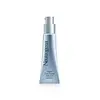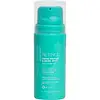What's inside
What's inside
 Key Ingredients
Key Ingredients

 Benefits
Benefits

 Concerns
Concerns

 Ingredients Side-by-side
Ingredients Side-by-side

Water
Skin ConditioningDimethicone
EmollientAluminum Starch Octenylsuccinate
AbsorbentDimethicone Crosspolymer
Emulsion StabilisingAmmonium Acryloyldimethyltaurate/Vp Copolymer
Trisiloxane
Skin ConditioningNylon-12
C12-15 Alkyl Benzoate
AntimicrobialAscorbyl Glucoside
AntioxidantGlycerin
HumectantMica
Cosmetic ColorantCaprylyl Glycol
EmollientTitanium Dioxide
Cosmetic ColorantPolyacrylamide
Xanthan Gum
EmulsifyingC13-14 Isoparaffin
EmollientSodium Hyaluronate
HumectantSodium Lactate
BufferingHydrolyzed Myrtus Communis Leaf Extract
Skin ProtectingSodium Hydroxide
BufferingBHT
AntioxidantDisodium EDTA
Polysorbate 20
EmulsifyingSodium PCA
HumectantLaureth-7
EmulsifyingRetinol
Skin ConditioningSorbitol
HumectantProline
Skin ConditioningHinokitiol
Parfum
MaskingWater, Dimethicone, Aluminum Starch Octenylsuccinate, Dimethicone Crosspolymer, Ammonium Acryloyldimethyltaurate/Vp Copolymer, Trisiloxane, Nylon-12, C12-15 Alkyl Benzoate, Ascorbyl Glucoside, Glycerin, Mica, Caprylyl Glycol, Titanium Dioxide, Polyacrylamide, Xanthan Gum, C13-14 Isoparaffin, Sodium Hyaluronate, Sodium Lactate, Hydrolyzed Myrtus Communis Leaf Extract, Sodium Hydroxide, BHT, Disodium EDTA, Polysorbate 20, Sodium PCA, Laureth-7, Retinol, Sorbitol, Proline, Hinokitiol, Parfum
Water
Skin ConditioningNiacinamide
SmoothingSimmondsia Chinensis Seed Oil
EmollientPolyacrylamide
Kojic Acid
AntioxidantC13-14 Isoparaffin
EmollientPhenoxyethanol
PreservativeRetinyl Palmitate
Skin ConditioningLaureth-7
EmulsifyingTocopherol
AntioxidantRetinol
Skin ConditioningPolysorbate 20
EmulsifyingSodium Metabisulfite
AntioxidantEthylhexylglycerin
Skin ConditioningCitric Acid
BufferingSodium Phytate
Squalane
EmollientTetrahexyldecyl Ascorbate
AntioxidantGlycerin
HumectantAlpha-Arbutin
AntioxidantAscorbic Acid
AntioxidantGlutathione
Azelaic Acid
BufferingAlchemilla Vulgaris Flower/Leaf/Stem Extract
AstringentMalva Sylvestris Flower/Leaf/Stem Extract
Skin ConditioningMentha Piperita Leaf Extract
Skin ConditioningPrimula Veris Flower Extract
Skin ConditioningVeronica Officinalis Flower/Leaf/Stem Extract
AstringentMelissa Officinalis Leaf Extract
Skin ConditioningSodium Sulfite
PreservativeSodium Hyaluronate
HumectantAchillea Millefolium Flower/Leaf/Stem Extract
Skin ConditioningWater, Niacinamide, Simmondsia Chinensis Seed Oil, Polyacrylamide, Kojic Acid, C13-14 Isoparaffin, Phenoxyethanol, Retinyl Palmitate, Laureth-7, Tocopherol, Retinol, Polysorbate 20, Sodium Metabisulfite, Ethylhexylglycerin, Citric Acid, Sodium Phytate, Squalane, Tetrahexyldecyl Ascorbate, Glycerin, Alpha-Arbutin, Ascorbic Acid, Glutathione, Azelaic Acid, Alchemilla Vulgaris Flower/Leaf/Stem Extract, Malva Sylvestris Flower/Leaf/Stem Extract, Mentha Piperita Leaf Extract, Primula Veris Flower Extract, Veronica Officinalis Flower/Leaf/Stem Extract, Melissa Officinalis Leaf Extract, Sodium Sulfite, Sodium Hyaluronate, Achillea Millefolium Flower/Leaf/Stem Extract
 Reviews
Reviews

Ingredients Explained
These ingredients are found in both products.
Ingredients higher up in an ingredient list are typically present in a larger amount.
This ingredient is also known as "C13-14 Isoalkane".
C13-14 Isoparaffin is created from petroleum-based mineral oils. It is an emollient and helps thicken a product.
As an emollient, it helps keep the skin soft and smooth by creating a barrier on top. This barrier traps moisture in, keeping the skin hydrated.
C13-14 Isoparaffin may not be fungal-acne safe.
Learn more about C13-14 IsoparaffinGlycerin is already naturally found in your skin. It helps moisturize and protect your skin.
A study from 2016 found glycerin to be more effective as a humectant than AHAs and hyaluronic acid.
As a humectant, it helps the skin stay hydrated by pulling moisture to your skin. The low molecular weight of glycerin allows it to pull moisture into the deeper layers of your skin.
Hydrated skin improves your skin barrier; Your skin barrier helps protect against irritants and bacteria.
Glycerin has also been found to have antimicrobial and antiviral properties. Due to these properties, glycerin is often used in wound and burn treatments.
In cosmetics, glycerin is usually derived from plants such as soybean or palm. However, it can also be sourced from animals, such as tallow or animal fat.
This ingredient is organic, colorless, odorless, and non-toxic.
Glycerin is the name for this ingredient in American English. British English uses Glycerol/Glycerine.
Learn more about GlycerinLaureth-7 is created by the ethoxylation of lauryl alcohol using ethylene oxide. Lauryl alcohol is a fatty alcohol with hydrating properties.
This ingredient is an emulsifier and cleansing ingredient. As an emulsifier, it is used to prevent ingredients from separating. It also helps cleanse the skin by gathering dirt, oil, and pollutants to be rinsed away.
Polyacrylamide is a synthetic polymer. It is used to stabilize products and bind ingredients. When hydrated, Polyacrylamide forms a soft gel.
Polyacrylamide is low-toxicity. If source properly, it is deemed safe to use in cosmetics.
It should be noted the precursor to Polyacrylamide is acrylamide. Acrylamide is a carcinogen. Most reputable sources of Polyacrylamide will screen for residual acrylamide to make sure the count is in a safe range. Acrylamide is not able to be absorbed through the skin.
We recommend speaking with a professional if you have concerns.
Learn more about PolyacrylamidePolysorbate 20 is made by combining ethoxylation of sorbitan, ethylene oxide, and lauric acid. It is a mild cleansing agent, surfactant, and emulsifier.
As a surfactant, it helps collect dirt and oils for washing. Emulsifiers prevent oils and water from separating.
Polysorbate 20 also adds scent to a product. Since it is made using sorbitol, it has a sweet scent. Sorbitol can also be found in fruits such as apples and peaches.
The lauric acid used to create Polysorbate 20 is often derived from coconuts.
Polysorbate 20 may not be fungal acne safe.
Learn more about Polysorbate 20Retinol is a gold-standard ingredient for anti-aging. It is a form of Vitamin A and belongs to the class of retinoids that also includes tretinoin.
Why is retinol famous?
It has the most scientific studies backing up its skin benefits out of all the non-prescription ingredients.
Retinol is proven to:
This is why retinol is effective at removing wrinkles, fading dark spots, treating acne, and reducing the appearance of pores.
Studies show retinol is less effective when exposed to UV. Be sure to look for appropriate packaging to keep your retinol potent (similar to Vitamin C).
Using retinol or any retinoids will increase sun-sensitivity in the first few months. Though studies show retinoids increase your skin's natural SPF with continuous use, it is best to always wear sunscreen and sun-protection.
We recommend speaking with a medical professional about using this ingredient during pregnancy.
Retinol may cause irritation in some people, so be sure to patch test. Experts recommend 'ramping up' retinol use: start using this ingredient once a week and work up to using it daily.
Read about Tretinoin
Learn more about RetinolSodium Hyaluronate is hyaluronic acid's salt form. It is commonly derived from the sodium salt of hyaluronic acid.
Like hyaluronic acid, it is great at holding water and acts as a humectant. This makes it a great skin hydrating ingredient.
Sodium Hyaluronate is naturally occurring in our bodies and is mostly found in eye fluid and joints.
These are some other common types of Hyaluronic Acid:
Learn more about Sodium HyaluronateWater. It's the most common cosmetic ingredient of all. You'll usually see it at the top of ingredient lists, meaning that it makes up the largest part of the product.
So why is it so popular? Water most often acts as a solvent - this means that it helps dissolve other ingredients into the formulation.
You'll also recognize water as that liquid we all need to stay alive. If you see this, drink a glass of water. Stay hydrated!
Learn more about Water